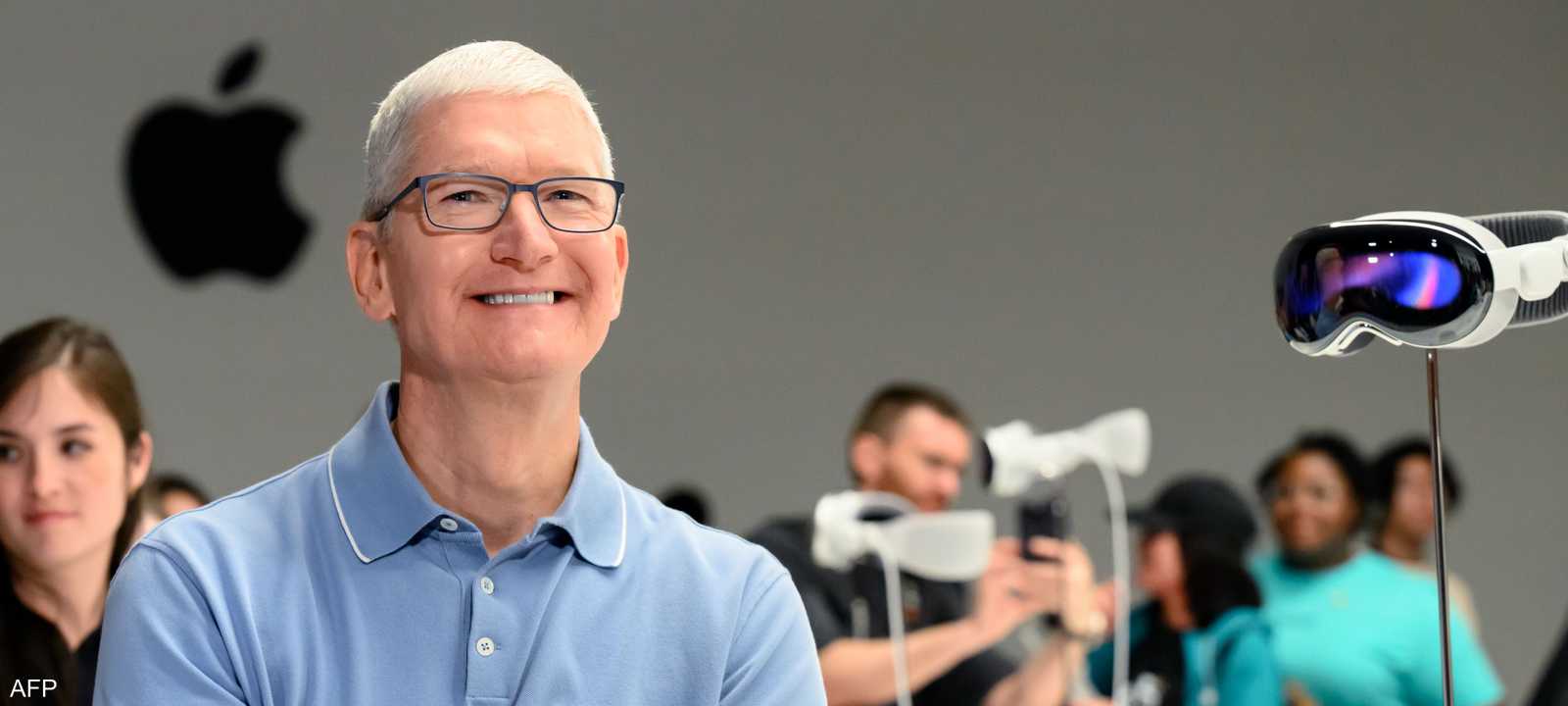
Apple CEO Tim Cook
Apple made a qualitative leap by showcasing its latest releases and innovations, including a highly developed headset that mixes virtual and augmented reality, without mentioning artificial intelligence, which has become a staple of innovation for the Silicon Valley company. technology.
Since U.S. start-up OpenAI launched ChatGBT last year, various technology companies have competed in the field of generative AI.
Analysts, investors, and consumers have become fascinated by these programs, which can generate text, images, and videos in fluent language based on simple needs.
Both Microsoft and Google are adding generative artificial intelligence to their search engines and productivity software, aiming to attract users interested in having robots write emails and plan vacations.
Likewise, some companies, from “Snapchat” to banks and travel companies, are adding advanced chatbots to their services to keep pace with this development.
Yet Google and Silicon Valley Meta (Facebook, Instagram) neighbor Apple didn’t mention generative AI once, or even at all, at their annual developer conference last Monday.
After the conference, a dedicated Wired magazine ran the headline “Apple Ignores Generative AI Revolution.”
Shut up?
The fact that the iPhone maker hasn’t mentioned AI doesn’t mean the technology is new to it.
The concept of artificial intelligence is considered broad, including many technologies that are neither rare nor particularly complex, but it has been criticized for heralding a science fiction future in which intelligent machines control humans.
As a result, some companies, including TikTok and Facebook (Meta), have released innovations that fall under the category of artificial intelligence, without focusing on the terminology itself.
“Of course, we build this technology into our products, but people don’t necessarily think of it as artificial intelligence,” Apple President Tim Cook said in an interview with ABC News this week.
Many of the innovations highlighted during Monday’s meeting feature the technology.
For example, software manager Craig Federighi pointed out that “machine learning” algorithms will improve automatic spell-correction tools.
Federighi hinted that, thanks to artificial intelligence, the keyboard will become less restrictive when the user wants to type some common swear words, in addition to learning his preferences and offering him suggestions.
However, he does not mention well-known algorithms.
Artificial intelligence has played a major role in Apple’s first mixed-reality headset, which is expected to go on sale next year starting at $3,500.
A computer equipped with a Vision Pro headset will be able to create a very close-to-real digital avatar of the user wearing it, thanks to video recordings of the person and sensors tracking his mouth and hand movements in real time.
Is it too late?
Some observers believe that the lack of mention of artificial intelligence shows that Apple has lost out to competitors.
Independent analyst Rob Enderle (Rob Enderle) said that Apple is “far behind” its competitors in this area.
He believes ChatGBT’s success has “surprised them”, adding, “I think they don’t think this type of AI is going to happen any time soon (…) and now they’re forced to hire a startup in the field .”
And the casual performance of Siri, Apple’s voice assistant, launched about a decade ago, gives the impression that the giant company is still lagging behind its rivals.
“It’s pretty clear to everyone that Apple has lost its competitive advantage to Siri, which is probably the most salient indicator that the company is lagging behind in artificial intelligence,” said Insider Intelligence’s Yuri Wurmser.
On the other hand, experts point out that “Apple” is first and foremost a computer equipment company. He noted that AI-based software is “a means to enhance the user experience, not an end in itself” for Apple.
Dan Ives of “Widbush” believes that the display of the “Vision Pro” headset shows the company’s capabilities in the field of artificial intelligence, although this topic is not explicitly mentioned.
“This is the first phase of a broader company strategy to build a system that includes generative artificial intelligence applications” on the new headset, he said.
